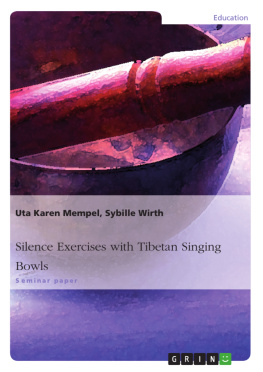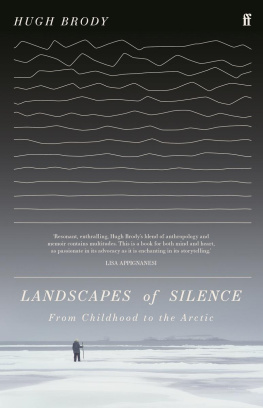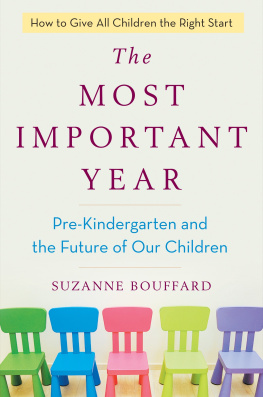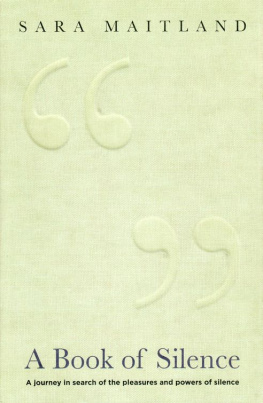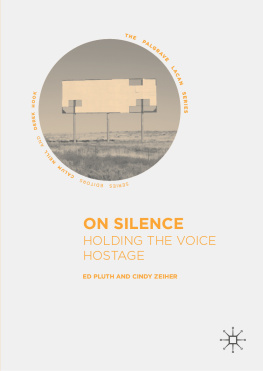I. Introduction
Silence is something many adults yearn for, especially in times in which the environment is getting increasingly louder. It is something precious as it benefits our body, spirit, and soul. A big problem at home, in kindergarten, and at school, however, are noisy, disruptive, aggressive, and unfocused children who cannot come to rest and find themselves any more. These children cannot sit still for five minutes, let alone concentrate on something for a longer period of time. To react with a loud scream, Silence damn it!, is certainly not the right way. Relaxation and concentration programs for children are popular like never before. But in addition to that, maybe the children themselves yearn for silence and it is not that difficult to get them on the right track. I would first like to take a look at the pedagogical theory by Maria Montessori followed by introducing my own ideas and experiences with Tibetan Singing Bowls. The practical exercises were developed in the music workshop in Bad Bergzabern in collaboration with Uta Karen Mempel; there are hardly any publications available with regard to this topic. In this music workshop I worked with small groups of five children and larger groups of up to 25 children. The age of the children was between four and 15 years.
II Theoretical Part
The Significance of Silence According to Maria Montessori
Silence plays an important part in Montessoris teachings. For her, experiencing silence is simply a part of education. A good atmosphere which benefits education cannot be achieved without silence.
Silence has a very high value in Montessoris teachings: Nevertheless, one knows from the educational point of view that, above all, silence has a very high inner value and that human beings who strive to perfect themselves or who wish to achieve a higher level of intelligence, artists and poets, must have this silence. It is a necessity; this silence is an absolute necessity
She learned from her observations that children, by all means, desire silence and do not create noise naturally. In 1938, Montessori gave a lecture in Holland about the lesson on silence: I had also noticed that very small children of three and four years of age and later small children of two years of age have an extraordinary love of silence.
Silence in the Montessori School
In Montessori schools, every visitor immediately notices the extraordinary silence. Silence is not be equated with the non-existence of noise or sound but it is rather something positive and not simply created by children being quiet and sitting still.
Montessori attributes the following significance to the silence in this school: The silence is a measure of success; it works as a control of error.
Silence exercises must never be used as disciplinary measures, the children must have the willingness for it: that this lesson of silence requires everyones consent, every single individuals,
Active and Passive Silence
There are two different types of silence: passive and active silence. Both are contrary to one another with regard to their personal references. While one is experienced as constraint and restriction, the other one is characterized as a delightful experience in heightened attentiveness. Passive silence as it is practiced in many homes or institutions through rules and orders is forced. Montessori rejects this type of silence. The heteronomy of the child creates fear and is contrary to ones own initiative.
that we cannot achieve silence and concentration through forced silence and concentration. Both grow from the childs actions and activities. Harmonious collaboration is essential which will lead to natural discipline which, in turn, is based upon freedom. Therefore, silence must be desired by the child. This desired silence is an active one based on becoming silent and absorbing silence. A prerequisite, however, is also controlling ones body. One can only walk through a room silently by making controlled movements. A state of rest is solely achieved by becoming conscious of ones own body.
It was later found how much a movement exercise such as this, in which any error is immediately detected by the noise it caused, leads to perfecting the capabilities of the children. Repeating this exercise will ultimately lead to such fine mastery of action that could never be achieved through purely external education.
Polarization of Attention
The path to silence requires a polarization of attention by the child meaning a concentration of attention on one activity or one object. During the creation of concentration during an activity with a certain material, Montessori observed three phases:
Preparation phase: The child choses a work station and a material.
Actual work phase: The child works in a concentrated and highly motivated manner with the material.
Phase of internalization, joy, happiness: The child achieves inner satisfaction through the joy in its activity.
This creates a silence originating from within the child.
The exercises with the special Montessori material result in (), an overall educational advancement of the child who will find a quiet existence.
A silence exercise without any movement during which the children are to remain motionless requires a concentration point namely the movement itself. Now, in order to have silence, one must simply not move. And in order to not move, one must think of everything that could move.
Sensitization of Hearing
During silence one is much more sensitive to the slightest noises, ones hearing perceives much more. The more frequently children are silent, experience silence and concentration, the more sensitive they become and the more they alert us to the slightest noises which we almost do not hear any more.
Hearing can detect the following:
- Silence
- The human voice
- Noises
- Music
Sensorial teaching according to Montessori with sound boxes or bells, for instance, results in refined perception and stimuli through repeated exercises. The sensorial material contributes to the children becoming more relaxed. If we want to lead children to concentration and silence, hearing and perception play a central part.
On the other hand, silence is a great basis to even be able to perceive noises. Training ones hearing originates in silence if it is based on immobility in order to achieve perception of noises or sounds caused by movements.
Die Role of the Teacher
(Hereinafter I will use teacher in lieu of teacher/female teacher and educator/femaleeducator).
As previously mentioned, a silence exercise must not be used as a disciplinary measure. The teacher has an important task, namely: It is necessary to teach the children silence.
Teachers and educators also function as role models. They must have gathered their own experiences and built a relationship with silence. It is important that the introductory words are spoken quietly and sparingly and that the movements are executed in a gentle and calm manner. Now I had come to the understanding that this matter must be granted a certain solemness, that one must not simply approach and say: Silence! Lets be silent! We must remain motionless!
Furthermore, it is the teachers task to prepare the surroundings for the silence exercises.

